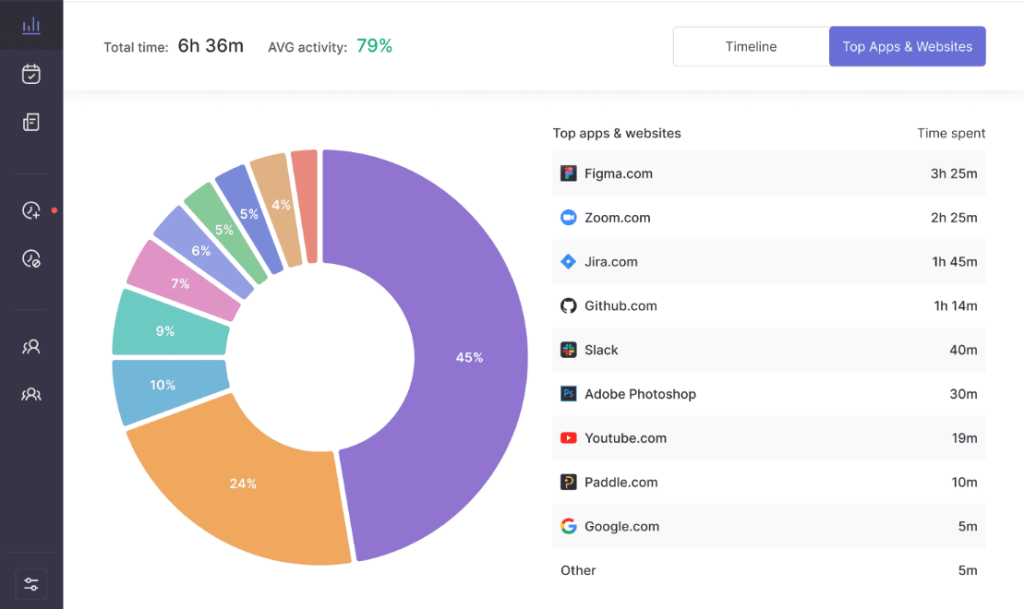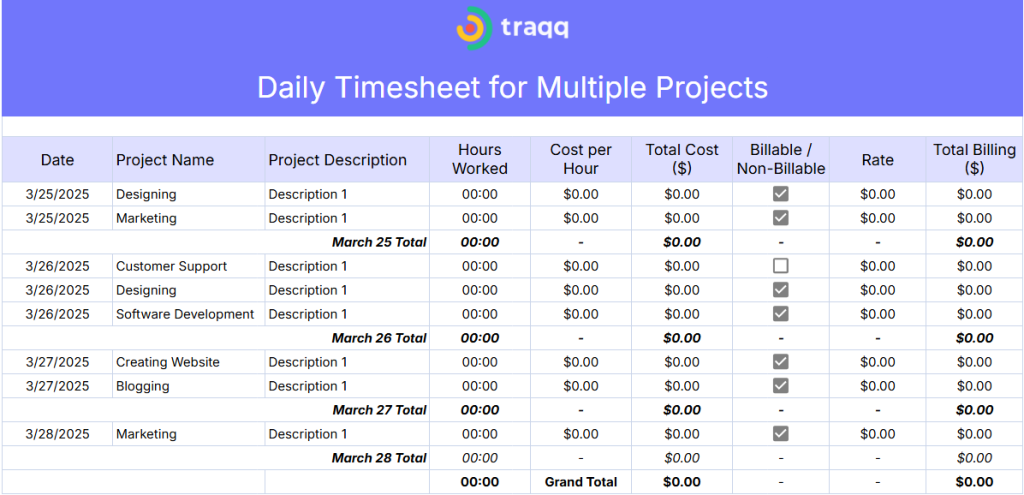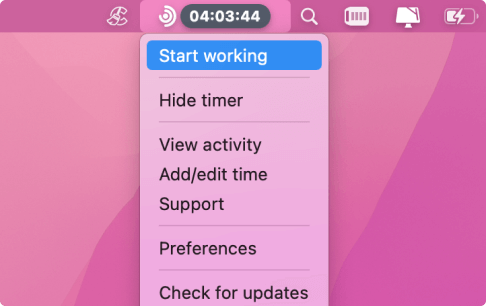If you’ve ever spent your Friday afternoon digging through emails and notes just to figure out how many hours you worked for a client, you’re not alone. For service providers, tracking time and getting paid accurately can be more stressful than the actual work. That’s where time tracking changes everything. It makes billing and invoicing smoother, faster, and honestly, less of a headache.
Whether you bill hourly, by project, or on a retainer, tracking your time helps ensure every minute is accounted for and invoiced correctly.
What Is Time Tracking?
Time tracking is simply recording how much time you spend on tasks, clients, or projects. It sounds basic, but when done right, it becomes a powerful tool.
You don’t have to guess how long something took. You don’t have to wonder if a task took one hour or two. You don’t even have to explain why the invoice looks “higher than usual.” Instead, everything is logged as you work and you have a clear trail to back it up.
Modern tools make this even easier. Just press “Start” when you begin work and “Stop” when you’re done. Some let you tag tasks to specific clients, categorize by project, or even label work types (like admin, research, or design). Over time, you’ll notice patterns. For example, how long blog posts actually take vs. what you thought.
Billing and Invoicing Challenges
Before we talk about how time tracking helps, let’s look at what makes billing and invoicing so frustrating.
- You forget to log hours and have to guess later
- Clients question the hours or ask for breakdowns
- It takes too long to prepare and send invoices
- Payment delays happen because of unclear invoices
I remember a freelance designer who used to scribble her work hours on sticky notes. By the end of the month, she would piece them together and hope the math made sense. She once underbilled a client by a full day. That one slip cost her both money and confidence.
How Time Tracking Simplifies Billing
Time tracking turns guesswork into clarity. Instead of estimating how long something took, you have exact numbers. This means:
- You can create accurate invoices with clear breakdowns
- Clients are less likely to dispute the charges
- You save time because the invoice writes itself from the log
Let’s say you’re a marketing consultant juggling five clients. Each one expects a detailed invoice. With time tracking in place, you’re no longer guessing. You simply open your tool, see the log, and hit send on the invoice.
Here’s what you get with time tracking:
- Better insights: You see where your time goes and which projects are profitable.
- Peace of mind: You don’t have to rely on memory or spend Sunday nights trying to remember what you did on Tuesday. Your work is documented, reliable, and transparent.
- More time to focus on work: Time spent chasing hours and formatting invoices is time lost. Automation frees you up to focus on what matters: serving clients, delivering quality work, and growing your business.
- Transparency with clients: When a client asks for details, you don’t have to scramble. You have the facts. That kind of transparency builds trust and helps set expectations from the start.
- Fewer payment delays: Accurate invoices mean fewer back-and-forth emails and faster payments.
- More professional image: Well-structured invoices show that you run your business with care. That professionalism can make a difference when a client is deciding whether to send more work your way or recommend you to others.
Time Tracking Methods That Work
There’s no one-size-fits-all. It depends on your workflow, tools, and preferences, but here are some options to consider.
Time Tracking Software (e.g., Traqq)
Tools like Traqq offer automated time tracking with detailed reports. Traqq runs in the background and captures app usage and active time. For service providers, this translates into accurate logs you can share with clients to back up your invoice.
What’s especially useful about Traqq is its ability to track both online and offline activity, so your work doesn’t go undocumented, even during internet outages.

Manual Tracking with Google Sheets
For those who prefer a DIY approach or are just getting started, Google Sheets can work as a basic time tracker. You can set up columns for date, task, start time, end time, and total hours. While it lacks automation, it offers full customization and is free to use.
It’s especially helpful for freelancers who don’t work full time or need a quick, lightweight solution. The downside is that you must remember to fill it out consistently.
You can use ready-made timesheet templates to save time on setup and make your sheet look more polished.

Bonus Tip: Integrated Time Logs with Client Management Platforms
If you’re using a system like Cloudways Client-Billing Reporting, things get even easier. It lets you connect your services to your clients and automate the billing part. So once your time is tracked and tagged to the right project, the invoice is ready to go. You can collect payments through Stripe without needing a separate tool.

Here is the way to streamline billing by using Traqq and Cloudways together:
Manual tracking is manageable with one or two clients, but once your business grows, you’ll need scalable systems. Tools like Traqq for tracking and Cloudways for client billing and reporting can handle complexity without creating more work.
You can track your time in Traqq, automatically recording every minute spent on a task or client. Once you’re ready to invoice, you simply export your time report from Traqq and associate it with the respective client inside Cloudways’ billing dashboard.
Cloudways then allows you to generate invoices, manage services per client, and collect payments via Stripe, all from one place. This combo is ideal for service providers who want both detailed activity logs and simple, organized billing workflows.
Final Thoughts
Time tracking is not about micromanaging yourself. It’s about working smarter and getting paid for the time you actually put in. When it connects directly with your billing system, it turns a messy chore into a smooth process.
Whether you’re freelancing solo or running an agency with a growing team, accurate billing builds trust with clients and gives you more time to do what you love.
Whether you’re just starting with Google Sheets, leveling up with Traqq, or integrating everything through Cloudways, the goal is the same: bill accurately, get paid on time, and focus on the work you love.
If you’re tired of late payments, vague invoices, and billing stress, maybe it’s time to make your hours count, literally.
